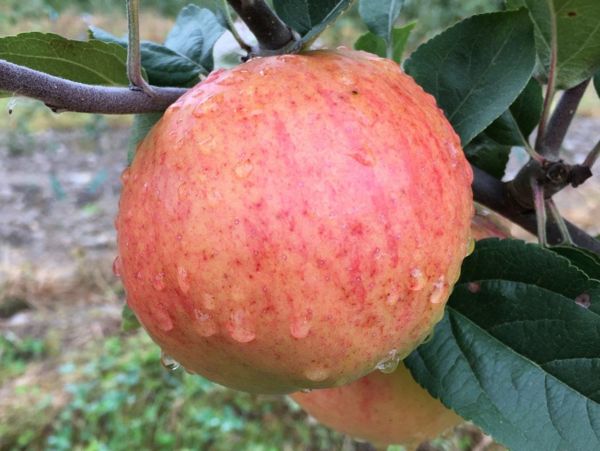An attractive, highly disease-resistant apple, ideal for organic growers.
Deer
Fruits Affected
Apple, Peach, Plum, Pear, Nectarine, Cherry, Apricot
Also See
Fruit Tree Diseases and Pests: An IntroductionList of Common Fruit Tree Diseases and Pests
Deer are cursed by almost every gardener in North America. They trample on flower beds, rub up against trees, and seem to eat practically everything. I once saw a deer walking up on its hind legs so that it could get at a handful of cherries. When it comes to fruit trees, it is imperative to protect your young trees from deer. They especially like to nibble on new shoots, but fruit, twigs, and leaves are also on the menu. This feeding can devastate an immature tree. In fall and winter, male deer also like to rub their antlers up against trees, an activity called "rutting." This is intended to attract does and to ward off other males, but it also causes severe damage to trees by wearing away at the bark. Because a male will return to the same tree over and again, he can eventually girdle and kill the tree entirely.
The only true protection from deer is to either fence them out or to fence in your trees. A perimeter deer fence needs to be either electrified or at least eight feet high, as deer will climb over anything shorter. Tall fences should also be well secured to the ground to prevent deer from crawling underneath. However, if you have just one or two trees, you can cage them in completely while they are still young, and if you bury the lower edge of the cage, this will have the added benefit of keeping many rodents away from the tree.
Besides fencing, there are chemical deterrents that can be effective, usually only if local populations of deer are low. Some growers have success with bars of soap. Look for the small, scented, hotel-sized soaps, bore a hole right through each bar for the string, and tie one of these to each tree. Deer don't like the fragrance, and if there are other options available, this will cause them to feed elsewhere. Plenty of commercial deterrents are also available, such as predator urine; these deter feeding with unpleasant scents and smells.
Finally, man's best friend just got better. A dog in your yard will usually (unless he's a complete slob like some of ours) chase away any deer that wander into his territory. In the past, we have also had success in large nursery fields by allowing several dogs to patrol freely in the area, kept in by an invisible dog fence. If you decide that Fido is going to save your trees, he will have to stay out at night too. Deer are active both during the day and after dark.
For more information, see Cornell's A Grower's Guide to Organic Apples.
Featured Products
A few things we're loving right now...
A full-flavored, freestone white peach.
A traditional semisharp cider apple from Spain.
A widely-grown, large, yellow-fleshed nectarine.


















